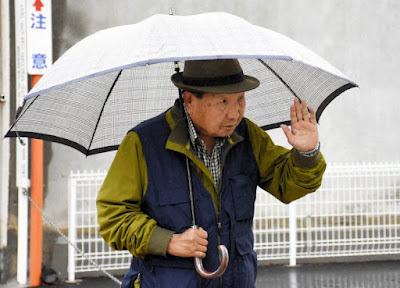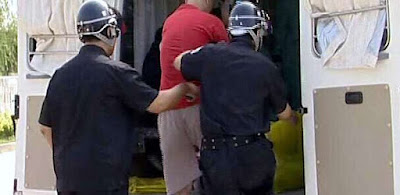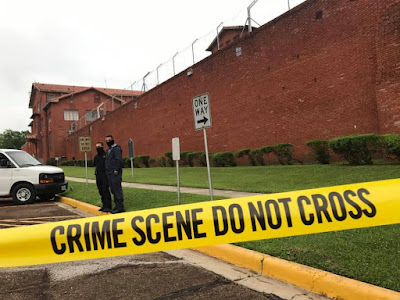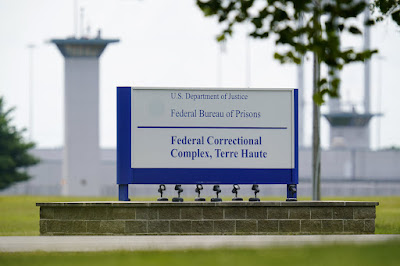When the state executed Harry Charles Moore in 1997, it chose the eeriest of hours -- just after midnight -- to deliver the lethal combination of drugs to the double murderer.
But if the state executes inmate Gary Haugen on Dec. 6 as planned, the procedure would unfold around 7 p.m.
The timing would help the state Corrections Department coordinate security with other public safety agencies, reduce the impact on employee schedules and limit disruptions to the inmates, said spokeswoman Jeanine Hohn.
The switch is one that several states across the country have made in recent years, trading out the midnight execution times for daytime or evening hours, said John Bessler, an associate law professor at the University of Baltimore and author of "Death in the Dark: Midnight Executions in America."
In some cases, the tradition goes as far back as the 1880s, he said, as states sought to crack down on the "carnival-like atmosphere" that accompanied hangings in the public square.
By bringing the executions inside prison grounds and moving the times to the dead of night, officials were able to limit attendance -- and media attention -- to the executions, he said.
Like other states, Oregon took control of hangings from county sheriffs in 1904 to cut down on the "circus" that developed, said Bill Long, author of "A Tortured History: The Story of Capital Punishment in Oregon." Long, a former Willamette University law professor, opposes the death penalty.
All 60 executions since then except for one -- the 1952 death by cyanide gas of Wayne Leroy Long -- have been held within the Oregon State Penitentiary in Salem. Long died in a special concrete structure built near the prison because the superintendent believed it would have less of a "bad psychological effect" on other inmates, according to accounts at the time. But the state later determined that the penal code required executions to occur within the penitentiary walls.
While Oregon generally hasn't maintained a particular time for executions, its five latest happened shortly after midnight -- including two gas-chamber executions in one night in 1953. Long's execution, for example, started at 7:04 a.m. and he was pronounced dead 13 minutes later. The 1920 hanging of Emmett Bancroft occurred at 8:31a.m. and he was pronounced dead 12 minutes later.
The shift to 7 p.m. has implications other than convenience for the state, Bill Long said.
"They want to look at it like business as usual," he said, by removing "the cover of darkness and (putting) it into the normal course of justice being administered."
He noted that the midnight hour adds to the eeriness of an execution. He recalled former Gov. Mark Hatfield's description of the "ghoulish" red phone that was hooked up in the governor's mansion if the governor wanted to grant a reprieve to LeeRoy Sanford McGahuey in 1962. Hatfield didn't, and the man convicted of murdering a woman and her 22-month-old son became the last person in Oregon to die in the gas chamber.
Despite the change to an earlier time, Haugen's execution still would stand out as an extraordinary event, Long said. The proposed execution would be the 1st in 14 years in Oregon.
Haugen was sentenced to death in 2007 for the killing of an inmate, David Polin, four years earlier. He had been serving a life sentence with the possibility of parole for the beating death of Mary Archer, a Northeast Portland woman who was the mother of his former girlfriend.
"It will really attract a larger vigil than a midnight vigil," Long said. "I think there will be a pretty good crowd out at the penitentiary that night."
Execution costs:
Corrections officials don't have a cost estimate for Gary Haugen's planned execution, but they released figures for the state's 2 executions since the death penalty was reinstated in 1984. Both were by lethal injection.
Douglas Franklin Wright, 1996: Sentenced to death for killing 3 homeless men. Total: $196,170. Breakdown: $85,205 for overtime, $89,437 for the attorney general, $4,864 for facility alterations, $16,664 for travel, training, equipment and other expenses.
Harry Charles Moore, 1997: Sentenced to death for murdering his father-in-law and mother-in-law. Total: $57,656. Breakdown: $21,574 for personnel including overtime, $2,891 for office expenses, $3,030 for facilities and maintenance, $539 for medical supplies and services, $3,012 for other supplies and services, $1,557 for staff food, $25,053 for legal costs.
Source: The Oregonian, November 2, 2011



.jpg)





